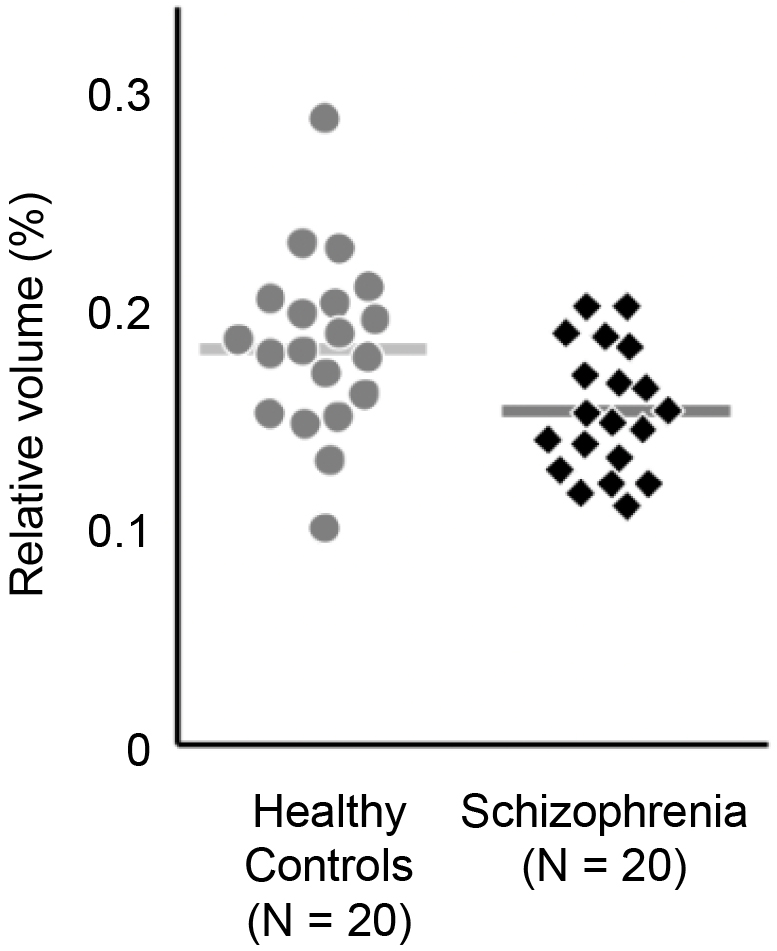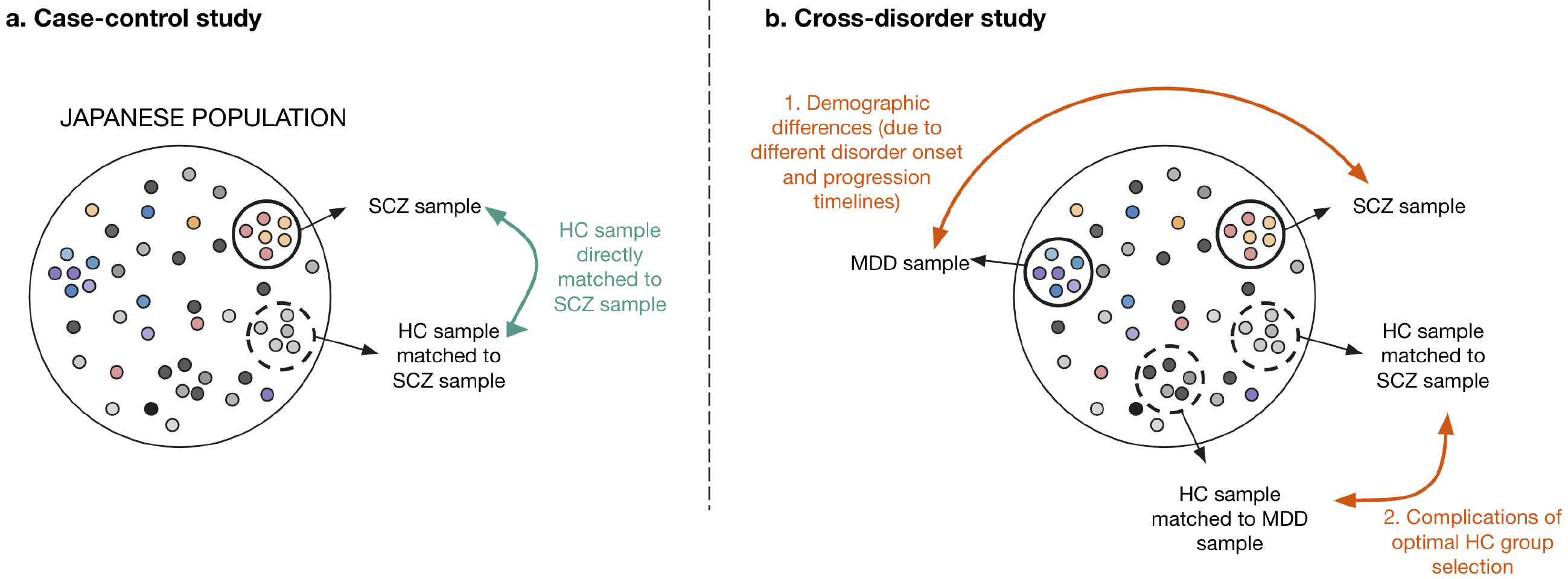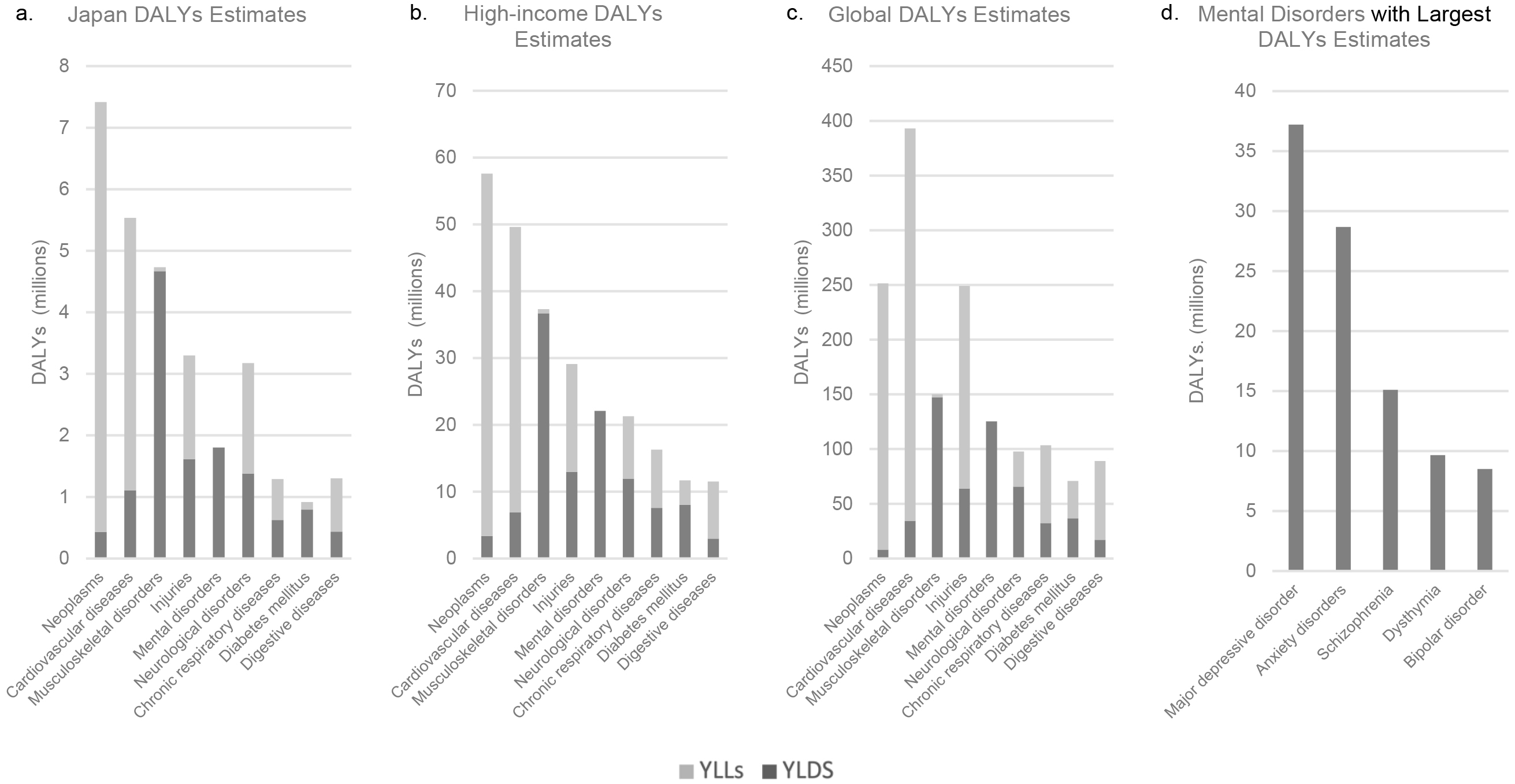Figure 2. Finding from an example case-control MRI study for schizophrenia.
This is an example finding from a case-control MRI study for psychiatric disorders that illustrates the group difference between individuals with schizophrenia and healthy controls for a brain feature, relative volumes in the right pars triangularis (PT) (20). Healthy controls exhibited an average higher relative volume of 0.183%. The schizophrenia group exhibited an average of 0.155%. Relative volume calculated by absolute volume/intracranial volume ×100.
From: Human Brain Magnetic Resonance Imaging Studies for Psychiatric Disorders: The Current Progress and Future Directions

Figure 3. Sample population confound in a cross-disorder study.
(a) In a case-control study, healthy control (HC) samples are generally matched for demographic characteristics (e.g., sex, age, and socioeconomic status) to the schizophrenia (SCZ) samples, which limits to control the potential effect of demographic-based confounders on the biological measurements (e.g., brain structural characteristics). (b) In a cross-disorder study (e.g., SCZ vs. major depressive disorder [MDD]), which is the first study conducted from a combination of datasets in case-control studies, the demographic characteristics of the two psychiatric disorder groups and the two matched control samples may have different demographic features because of different peak ages at onset and progression timelines between the disease groups.
From: Human Brain Magnetic Resonance Imaging Studies for Psychiatric Disorders: The Current Progress and Future Directions



